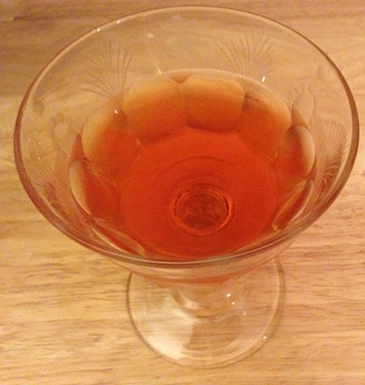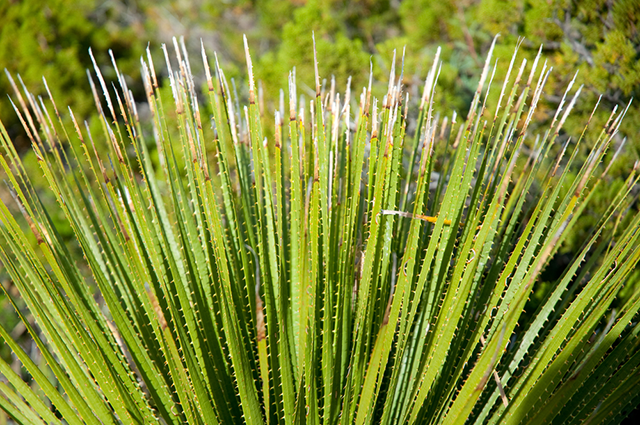Discover This Drink: Sotol
By Staff in Food on Sep 16, 2014 6:00PM
Cross the Arizona border into Mexico, stop in the Chihuahuan desert, and burrow up to the bar at the nearest cantina for a sip of something revelatory ... something called Sotol.
While tequila is obviously a bar staple and mezcal is gaining a cult following, agave isn't the only desert plant that makes incredible spirits. People in the northern deserts of Mexico have been drinking a beer made from fermenting a plant known as sotol, sometimes called “desert spoon” in English, for centuries and possibly distilling it long before the Spanish conquistadors landed in North America.
Technically an evergreen (not a succulent like agave), the sotol plant is resistant to both frost and drought. Its leaves are long and numerous, skinny and sawtoothed, growing in the mountainous desert region that roasts under the sun during the day and chills under the stars at night.
Archaeologists have uncovered sandals, baskets, ropes, and mats made from sotol fiber dating back thousands of years to ancient Pueblo. Near El Paso, researchers have found sotol stalks in ceremonial caves, along with paintings of a mythical figure with an up-do resembling the spoon's defining spiky hair. The plant's cooked base could be eaten like an artichoke leaf, which leaves behind a quid that looks like, well, a spoon! Perhaps the most intriguing discovery, however, are the 9,000-year-old troughs uncovered in Pueblo's caves: ancient troughs are to ancient accidental alcoholic beverages as gastropubs are to craft beer. You don't find one without the other.
A little research reveals a couple sotol-related articles from 2011 and 2012, but why has it skipped two beats? For the same reason hundreds of spirits are and might never be seen outside their native land—money. No liquor conglomerate had so much as shrugged a shoulder at Sotol in the half-century during which we have been importing a vastly increasing amount of tequila before mezcal stole the spotlight.
Mescal (note the s) is the great umbrella of distillates under which lie tequila, mezcal, bacanora, sotol, and dozens of other spirits little known outside of the villages where they are created and enjoyed. Chihuahuans at first utilized their native crop for fibrous food and clothing and quickly learned to ferment it into alcohol.
The US caught wind of its nearby neighbor’s gem around 2010, mostly in the Southwest (LA and Austin, respectfully). At the time only two brands entered the market—Hacienda de Chihuahua and Don Cuco, but for whatever reason, they only hit the most extreme Latin-inspired spirit houses here in Chicago—namely Masa Azul. Now we too have access to a family-owned and operated brand in Ocho Cientos.
Sotol can refer to the plant itself as well as the smoked distillate. It holds its own Denomination of Origin in the states of Chihuahua, Durango, and Coahuila, though experts will dampen any tequila, mezcal, or sotol fiend's mood by cautioning of Mexico's notoriously crooked politics. (That is to say, read labels carefully and research brands before falling for their coy proclamations.)
The process of making the liquor is most similar to that of its younger sibling born in Oaxaca. While most agave plants are harvested between the ages of 7 and 10, yielding about eight bottles of liquor per plant pina, sotol’s 12- to 15-year-old pinas yield a single bottle of booze once all is chopped, hauled, cooked, fermented, distilled, rested and/or aged, and bottled. Labor and love truly make any Mexican spirit an amazing feat – the majority of these processes are completed by hand. But sotol might be the most strenuous example.
The plant’s tops are cooked in an underground volcanic clay and stone oven for three days (like mezcal) before fermenting with water and wild yeast. The distillation process occurs in the most traditional of ways—in naturally steam powered clay pot stills, of course. Age variations follow similar time frames to Tequila.
The end result is a spirit that will make you think twice before settling on a margarita with a mezcal float. You can sense the smoke, but in a subtler, fruitier sense than the mostly Oaxacan spirit. It’s grassy and earthy, viscous and herbaceous. Slide it into a 20th century with lemon, creme de cacao, and Lillet or Cocchi Americano for an unexpected bent: sotol is a natural swap for tequila but an surprising herbal substitute for gin.
I spy Sotol Negronis in our future.
Where to find Sotol in Chicago: Masa Azul, Frontera/Topolobampo, Billy Sunday, Bad Apple, mfk, Parachute, Brindille, Bar Takito and Sportman's Club
1900 Spoons
1½ ounce Ocho Cientos Sotol Blanco
¾ ounce Cocchi Americano
¾ ounce creme de cacao
¾ ounce fresh lemon juice
Shake vigorously with ice and strain (double, if possible) into coupe. Dry shake with a dash of egg white if desired for a pretty texture and mouthfeel.

Sotol Negroni
1 ounce Ocho Cientos Sotol Blanco
¾ ounce Campari or Cappelletti for a brighter style
¾ ounce Dolin Rouge vermouth
Stir well with ice, strain into glass, zest and garnish with orange peel.
*We found this version more balanced with less-than-equal parts of vermouth and bitter. Tastes (and fondness of tradition) may differ.
El Ocho
2 ounces Ocho Cientos Reposado
¾ ounce creme de cassis
¾ ounce fresh lime juice
1 ounce ginger-allspice syrup
dash aromatic bitters
soda
Shake all but soda; strain over crushed ice in Collins glass, top with soda, and garnish with mint sprig. Substitute ginger beer for syrup and soda if desired.
To make ginger syrup, combine sliced fresh ginger and a few teaspoons of crushed allspice berries with ½ cup water and ½ cup sugar; bring to a boil, then simmer for 10 minutes. Strain well and refrigerate before using. You can also use this syrup for a tasty homemade ginger ale.
Discover This Drink is a series highlighting drinks beyond your everyday cocktail, cider, beer, and wine options.
By Kristine Sherred
